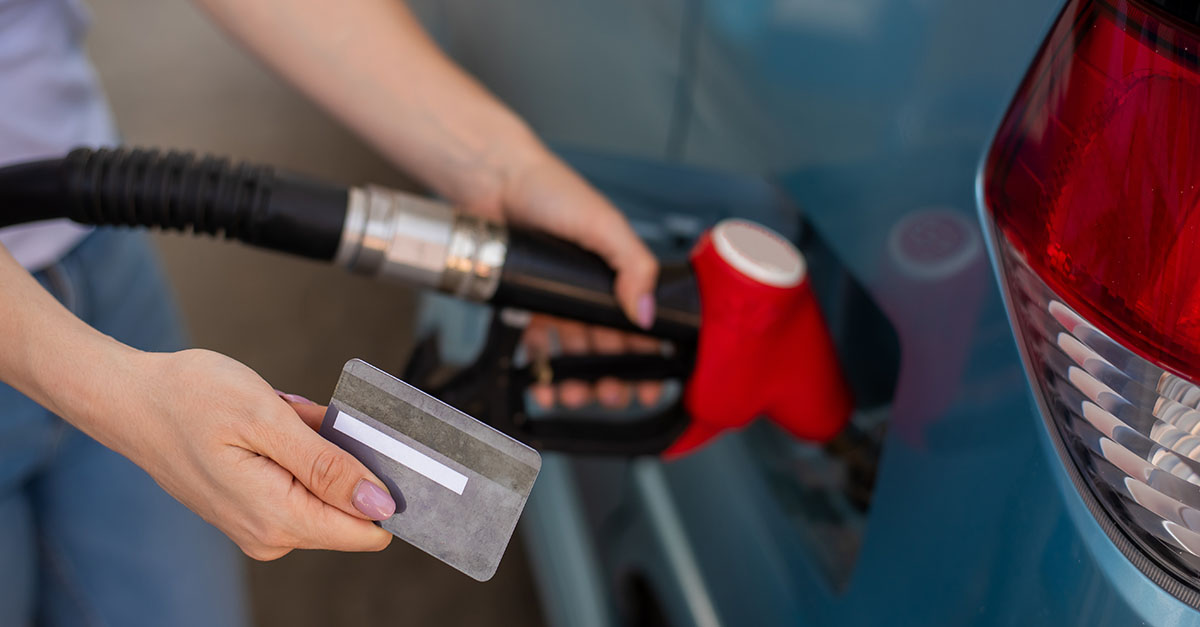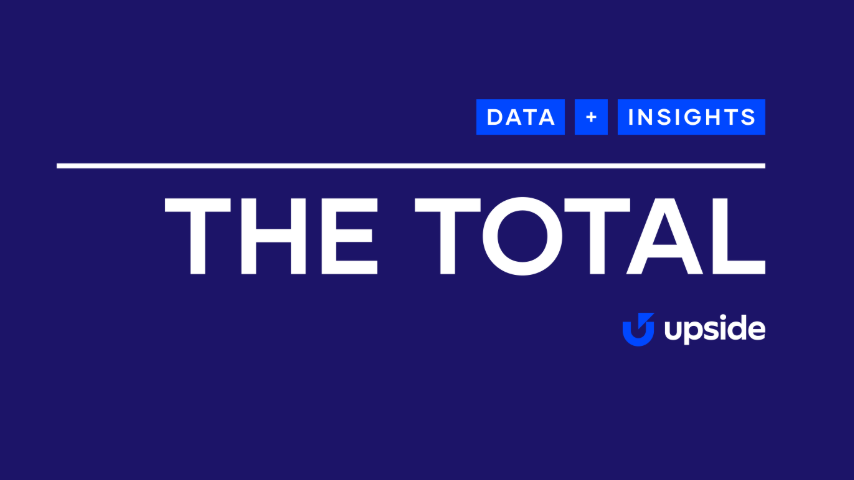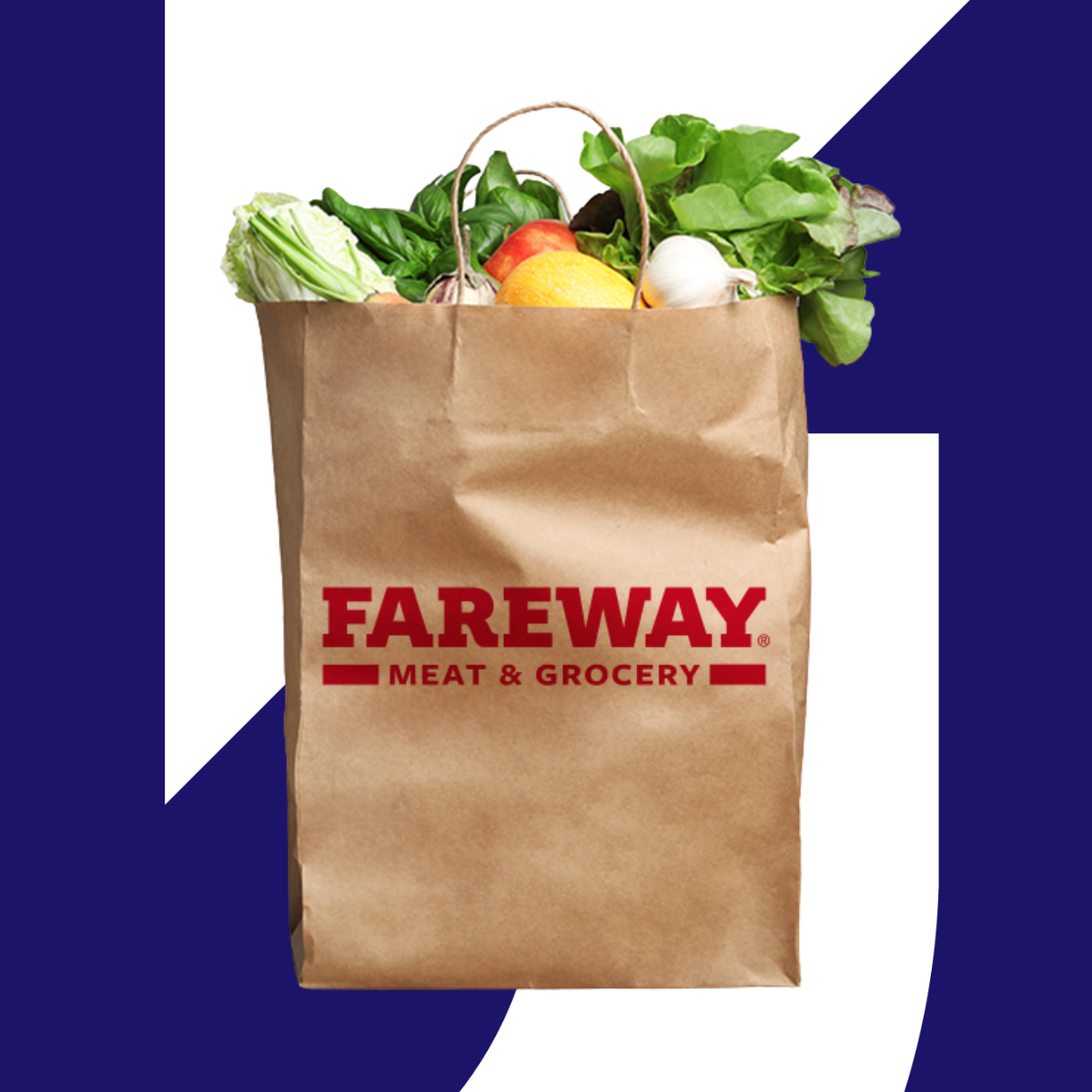How to increase sales in retail: A performance-based approach for modern retailers

The Upside Team
The retail landscape is evolving rapidly, creating new opportunities for retailers who understand how to adapt. Consumer expectations around convenience, personalized experiences, and data-driven engagement continue to rise, opening doors for innovative approaches to customer acquisition and retention.
You may have responded by increasing your marketing budget, adding loyalty program perks, or experimenting with digital advertising. Yet your customer acquisition costs keep climbing, and many retailers are looking for better ways to measure their marketing effectiveness. The problem isn't your effort — it's that traditional sales tactics were built for a different marketplace, one where impressions and clicks actually translated to incremental business.
What you need are performance-based strategies that work alongside your current efforts to drive measurable, incremental profit. Instead of paying for marketing activity and hoping for results, you can focus on approaches that only charge you when they deliver verified new business to your doors.
How customer acquisition is changing for retailers
Rising customer acquisition costs hit you harder than your competitors
Retailers are prioritizing customer acquisition approaches that provide clear measurement and proven ROI. While traditional digital advertising offers valuable reach, many retailers want more direct connections between their campaigns and actual store visits.
While Walmart can absorb higher acquisition costs through cross-selling and scale advantages, you need every investment to generate immediate, measurable profit. This makes it essential to choose customer acquisition strategies with proven attribution and measurable impact.
Margin pressure forces smarter promotional decisions
Retailers today are navigating a complex cost environment. Supply chain and labor expenses have increased substantially in most markets, while consumers have become more selective about where they spend. This creates opportunities for retailers who can demonstrate clear value and optimize their promotional strategies.
The most effective promotional strategies generate incremental business that covers costs and builds long-term customer relationships. Smart retailers are increasingly focused on ensuring their promotions attract genuinely new business rather than simply shifting existing sales from one time period to another.
Adapting loyalty strategies for today's shoppers
Your customers now behave fundamentally differently than they did even five years ago. Modern shopping patterns include:
- Belonging to multiple loyalty programs while spreading purchases across numerous retailers monthly.
- Making purchase decisions based on immediate convenience and value rather than brand loyalty.
- Comparing your offers to competitors' in real time using mobile apps and websites.
- Deciding where to shop within hours of making their actual purchase.
This means loyalty programs remain valuable for engaging your committed customers, but many retailers are finding they need an added layer to influence uncommitted customers at the point of decision. Traditional awareness-building advertising works well for long-term brand recognition, while performance-based strategies can capture customers during those critical moments when they're actively choosing where to shop.
Why traditional approaches fall short
Many traditional sales tactics focus on measurable activities like impressions and click-through rates rather than directly tracking business outcomes. This creates a gap between what you pay for and what you actually receive — impressions that may not drive foot traffic, campaigns measured by clicks rather than store visits. Even sales increases can mislead you if they're simply shifting business from one time period to another without creating new customer relationships or building habits with the ones you have.
Most marketing platforms charge you for activity rather than results because they can't prove actual attribution. This creates an opportunity for retailers to gain clearer visibility into which investments actually drive incremental business growth versus activities that would have occurred naturally.
Performance-based approaches that deliver results
Focus on incremental transactions, not total volume
The difference between new sales and cannibalized sales determines whether your sales strategies actually improve your bottom line. Incremental transactions are purchases that wouldn't have happened without a specific intervention. Cannibalized sales are transactions you would have received anyway, making some promotional costs seem like an expense rather than an investment.
Measuring true attribution requires a methodology that compares actual customer behavior against what would have happened without your promotion. This requires matching each customer who receives an offer with a control group of similar customers who didn't receive it, then measuring the difference in their spending patterns.
How personalization protects your profitability
One-size-fits-all promotions can hurt margins by over-incentivizing frequent customers while under-incentivizing infrequent ones. Your regular customers might visit anyway with a smaller promotion, while new customers need stronger incentives to try your business for the first time.
Personalized, margin-bound offers solve this problem by tailoring each cash back promotion to the minimum incentive needed to influence that specific customer's behavior. A frequent customer might receive a modest cash back offer, while a new customer receives a larger incentive — all calculated within the constraints of your available profit margin to ensure every transaction remains profitable.
Effective customer segmentation accounts for visit frequency, average basket size, and responsiveness to promotions. Performance-based platforms handle this segmentation in the background for you, optimizing your promotional spending by offering each customer exactly what they need to choose your business over competitors, without you having to overspend on frequent visitors.
How to turn downtime into profitable transactions
Most retailers operate below their total capacity. Before investing in expansion, you can increase retail sales by filling your existing capacity with new transactions during underutilized periods:
- Restaurants: Target mid-afternoon periods and late evening hours when tables sit empty.
- Grocery stores: Focus on mid-morning and early evening windows between peak shopping times.
- Fuel stations: Capture off-peak commuting hours and weekend travel periods.
To understand customer movement and optimize your true capacity utilization, you need to analyze foot traffic patterns, transaction timing, and peak versus off-peak performance. Cost-efficient growth strategies focus on driving customers during these slower periods rather than competing for the same peak-hour customers as your competitors, improving your overall profitability per square foot without increasing operational costs.
Only pay when you profit
The shift from cost-per-impression to paying for incremental sales within margin constraints changes your relationship with customer acquisition. Instead of paying for marketing activity and hoping for results, you only invest when you earn validated incremental profit.
This approach eliminates acquisition risk because your investment is tied to actual business outcomes. If a promotion doesn't drive profitable transactions to your business, you don't pay for it. This allows you to scale your customer acquisition efforts without the traditional risk of overspending on ineffective campaigns.
Performance-based strategies complement your existing marketing efforts rather than replace them. Your loyalty program, local advertising, and community engagement continue operating as usual. The performance-based layer captures additional customers who weren't reached by your current efforts while also increasing visit frequency among your existing customers, expanding your total customer base and boosting retention without cannibalizing your existing investments.
These strategies work by using the transaction data you already collect to power personalized promotions, without changing anything about the way you do business. You maintain the same customer interaction at your point of sale while the platform handles offer personalization, delivery, and verification in the background.
Digital marketplaces exemplify this approach by connecting you with consumers who are actively deciding where to shop. Platforms like Upside reach millions of consumers through mobile apps and extensive partner networks — including Uber, Lyft, and GasBuddy — presenting your business with personalized cash back offers at the exact moment customers are planning their routes and making buying decisions. These marketplaces offer exclusivity zones that prevent your nearby competitors from joining, giving you a competitive advantage in your local market.
The metrics that matter for your bottom line
Moving beyond vanity metrics requires focusing on measurements that directly correlate with your business profitability. Impressions, clicks, and even total sales numbers can mislead you if they don't account for what would have happened anyway.
Incremental profit measurement compares each customer's actual spending against their predicted spending without your intervention. This methodology uses control groups matched by shopping history, demographics, and behavioral patterns to establish baseline expectations, then measures the difference between actual and expected results.
Your ROI calculation framework should account for the total cost of customer acquisition divided by the incremental profit generated over a meaningful time period. This includes not just the immediate transaction but the lifetime value of customers acquired through each channel.
Dashboard insights that drive decisions focus on actionable metrics: which customer segments respond best to specific offer types, what times and locations generate the highest incremental impact, and how your performance-based strategies enhance your existing customer retention efforts. These insights allow you to optimize your approach continuously rather than making decisions based on assumptions.
Tracking at the transaction level can help you be more successful, ensuring every marketing dollar connects directly to verified business outcomes. This granular measurement capability — comparing your Upside users against matched control groups of non-users with similar shopping behaviors — separates profitable customer acquisition from other marketing approaches.
How to get started based on your business size
Getting started with performance-based customer acquisition is straightforward regardless of your business size. Most retailers can launch within days using the transaction data you already collect through your existing point-of-sale systems.
Your testing methodology should establish clear baselines before implementing new strategies. Document your current customer acquisition costs, average transaction values, and repeat visit rates. This baseline data becomes essential for measuring the incremental impact of performance-based approaches.
Performance-based customer acquisition strategies deliver measurable results that you can track through your dashboard. Full impact measurement requires several months of data to account for seasonal variations and customer behavior patterns.
Focus your initial efforts on your highest-opportunity time periods — those moments when you have available capacity but lack sufficient foot traffic. For restaurants, this might mean ate-afternoon periods. For grocery stores, mid-morning or early evening shopping windows. For fuel stations, off-peak commuting hours.
Your path to accountable, profitable growth
The retail landscape demands accountability in every sales strategy you deploy. Performance-based approaches provide that accountability by tying your investment directly to incremental profit rather than marketing activity. This shift allows you to compete effectively against larger retailers while maintaining the margins necessary for sustainable growth.
Your path forward isn't about abandoning your current efforts — it's about enhancing them with strategies that deliver measurable, incremental results. When you only pay for verified business outcomes, you can scale your customer acquisition confidently while building the sustainable competitive advantage needed to thrive in today's consolidated marketplace.
How Upside works

Upside is building a digital marketplace that fundamentally changes how retailers and consumers connect. We exist to advance the economic power of people living and working in the real world — creating a platform where retailers earn incremental profit without changing how they operate, while consumers gain purchasing power on the everyday purchases they need to make anyway.
Our marketplace connects over 100,000 retailers across fuel, grocery, and restaurant categories with more than 35 million consumers through personalized cash back promotions. These aren't generic discounts or one-size-fits-all offers. Each promotion is dynamically generated based on individual customer behavior and bound by your available profit margin, ensuring you only incentivize the exact amount needed to influence each customer's decision while protecting your baseline profitability.
Our platform uses the transaction data you already collect to power personalized promotions, requiring no software integrations or operational changes on your end. You maintain the same customer interaction at your point of sale while we handle offer personalization, delivery through our app and partner network, and transaction verification in the background. This means you can launch and see results in days, not months.
We reach consumers where they make buying decisions — on their phones — through both the Upside app and our extensive network of partner applications including Uber, Lyft, Instacart, and GasBuddy. When consumers are planning their routes and deciding where to shop, dine, or refuel, we present them with personalized cash back offers that motivate them to choose your business over nearby competitors.
Since launching, we've delivered over $1.8 billion in incremental profit to our retail partners while returning more than $1 billion in cash back to consumers. These numbers represent real transactions, real customers, and real profit — all validated to ensure every dollar of impact is truly incremental to your business.
Frequently asked questions
How does performance-based customer acquisition actually work?
You only pay when we drive customers who wouldn't have visited your business otherwise. Here's how we prove it: when someone uses Upside at your store, we compare their spending to similar customers who don't use Upside. If the Upside customer spends more than expected based on the control group, that difference is incremental — and that's what you pay for. If we can't prove the transaction is truly new business, you don't pay anything.
Will this hurt my existing loyalty program or current marketing?
No — Upside works on top of everything you're already doing. Your customers still use their loyalty cards, your local advertising keeps running, and your current promotions stay in place. We just add an extra layer that reaches new customers you weren't getting before. Many of these new customers end up joining your loyalty program after their first Upside visit, actually boosting your existing efforts.
Can I see which customers came from Upside?
Your dashboard shows you everything: which transactions came from Upside, how much extra money each customer spent compared to what we expected, and when these visits happened. You can see if Upside customers become repeat visitors and how they interact with your other programs. This lets you compare Upside's performance to your other marketing efforts with real numbers instead of guesswork.
Share this article:
The Upside team is made up of data scientists and industry experts who are passionate about delivering empowering content to our readers. With a focus on providing practical insights and meaningful perspectives, we create engaging materials across a wide range of topics. From exploring industry trends and offering expert analysis to sharing useful tips and inspiring ideas, our team works diligently to provide you with the information you need to thrive.
Request a demo
Request a demo of our platform with no obligation. Our team of industry experts will reach out to learn more about your unique business needs.









.png)





